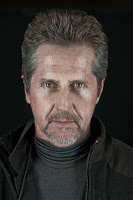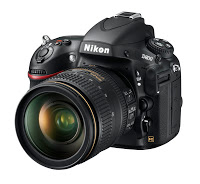Nikon D800: 1er test terrain – interview de Rob Van Petten
Pour ceux qui attendaient comme moi le Nikon D800, vous avez très certainement entendu parlé de Rob Van Petten qui a eu la chance de travailler avec des prototypes du Nikon D800 dès juin 2011, pour des tests aussi bien photo que vidéo. Il a ensuite reçu un D800 quasi final et l’utilise depuis. Autant vous dire que s’il y a une personne qui a réellement testé le Nikon D800 dans de vraies conditions, il s’agit de Rob Van Petten! Rob a d’ailleurs publié sur son propre blog quelques articles sur le D800. J’ai eu aujourd’hui l’occasion de l’interviewer sur le D800 en lui posant des questions précises sur des points que j’attendaits personnellement du D800, en particulier en regard d’autres appareil de la marque jaune comme le D700. Alors, quel est son avis ?
The D800 is a bit smaller and noticeably lighter than a D700. Most of the buttons are in the same place with the addition of the video record button near the shutter release and the still/video selector on the back. The ergonomics of the camera are similar to other newer Nikon bodies. The finish is a rubberized composite, like the grips of the D3 – the D700. The pop-up flash functions similar to the D700, including the Commander Mode for remote flash. The camera body, being lighter and smaller, is noticeably easy to handle and carry compared to the D3x, the previous large file high resolution camera. The LCD is about .2 inches larger than the previous models – every little bit helps. The accessory door reveals a USB3 socket, an HMDI straight video out, a headphone output, and a mic in with an expanded option menu. The body is a bit more rounded in the shoulders than the previous models with a little more tilt angle to the left side QUAL, WB, ISO, BKT knob.
It’s a huge advantage to have a full viewfinder, beyond the convenience of not having to guess or crop. Those of us who don’t crop and regard the entire image area as a the way we envision it, can now shoot what we see.
HDR function is JPEG output only. The Camera combines 2 exposures in up to a 3 EV range and produces a compressed jpeg in camera.
The IMAGE AREA option allows shooting in full FX, (36 x 24), 1.2 (30x 20), DX (24 x 16), or 5:4 (30x 20). The smaller formats are cropped out of the full FX format and are designated by a red crop mark in the view finder after activating the desired format. The full image area of the FX is always visible just marked by the fine red crop line.
Yes – I have shot with the video function of the camera. The video quality is very good – offering a variety of formats from 1920 x 1080P at frame rates of 30, 25, 24 and at 1280 x 720 frame rates of 60, 50, 30, 25. A head phone jack has been added with the option of manual or automatic microphone settings. The video convergence is a big part of what I intend to do with this new camera.
I have said that the D3x approaches a medium format camera. Not to say that it completely replaces the larger formats, BUT – when I simply hold up a print 22 x 17 inches that I have shot with the D800, I could not have gotten it to look any sharper with a medium format camera. That allows me the opportunity to own and maintain one system. One camera, one set of lenses. If I need a higher ISO camera, my D3s or D4 will fit the same lens system. The handling, size and weight of the D800 make it a lot more ergonomically friendly. It’s a pleasure to shoot. The build is precise and the feel is rugged and elegant.
The real story here is the file size with video as well. The metering is greatly improved – not that there are complaints about the D3 – D3s metering. The metering has 90,000 more sensors, and is linked to the program functions with face and scene recognition. Shooting in automatic modes is greatly improved as a result. The auto focus is now quicker and unerring. It just locks on to a subject and is unwavering. In the studio where I shoot mostly in a manual mode, the story is about the file size. This changes my thought process to include an awareness of the huge file as I am shooting. It will slow me down to concentrate on composing and directing. The images have so much more apparent detail it may change some of my retouching habits as well. I have been using smaller brushes and getting finer contours and rendering of skin as a result of the higher resolution. The dynamic range will allow me to take greater risks at either end of the light range. I noticed immediately the greater coverage in whites and highlights. Then I deliberately set up a shoot to stay very dark and moody. I shot at the bottom of the histogram to see how it tolerated shadows and blacks and the results are really gorgeous.
It’s just a much better camera than anything else I’ve used. My intention is to make sharper, more dynamic, higher quality images with a DSLR. This is going to do it.
 Pour ceux qui ne connaissent pas encore Rob Van Petten, je vous invite à (re)découvrir les travaux de sur son site web http://www.robvanpetten.com/
Pour ceux qui ne connaissent pas encore Rob Van Petten, je vous invite à (re)découvrir les travaux de sur son site web http://www.robvanpetten.com/Et vous, que pensez-vous de ce Nikon D800 ?
Si vous pensez passer le pas, vous pouvez aider mon blog 🙂 il suffit de passer par les liens suivants vers mes partenaires lors de votre achat :
NIKON D800 chez Miss Numerique








Bonjour,
Je me demande toujours si sur le D800 Les Raw '(Nef's) , existe en version "crop"
avec des fichier plus petit pour format 1.2 (20×30) ?
Richard – http://www.photoway.com/
Oui – Les tailles disponibles sont des cultures 1.2x (30 x 20), DX (24×16), 5:4 (30×24)en RAW.
Thanks Rob for this answer to this reader, happy to see you on the blog 🙂